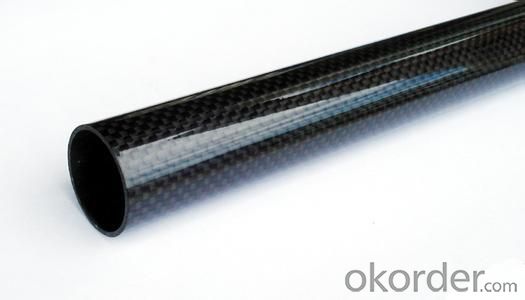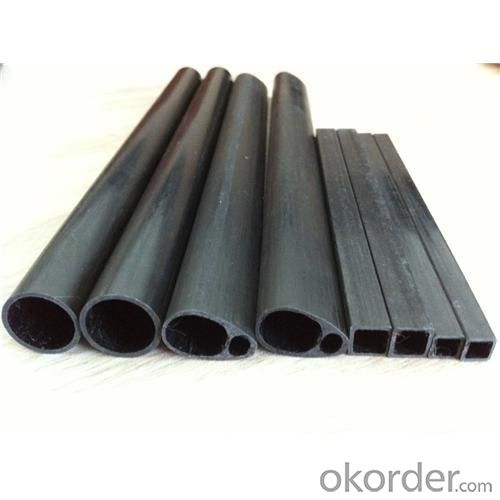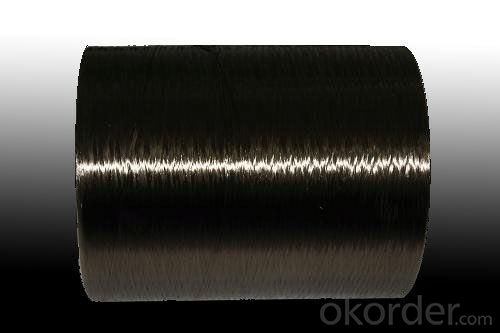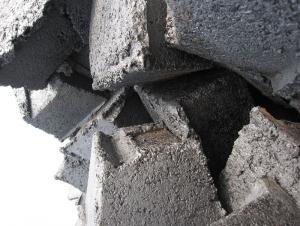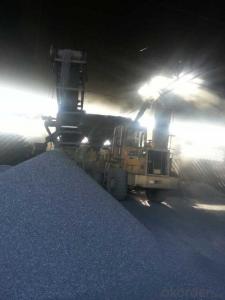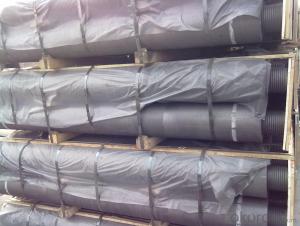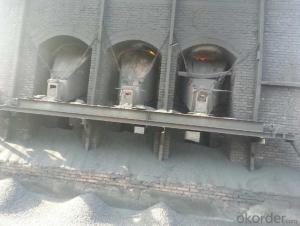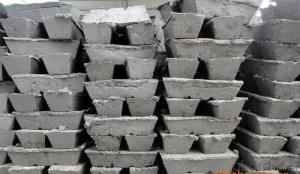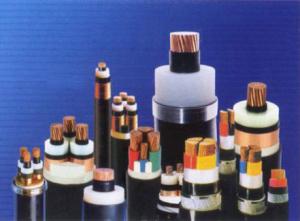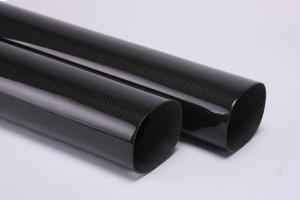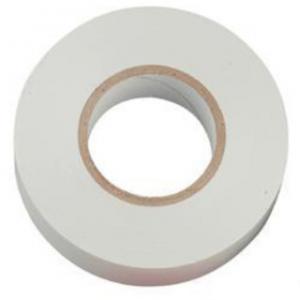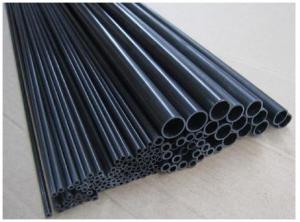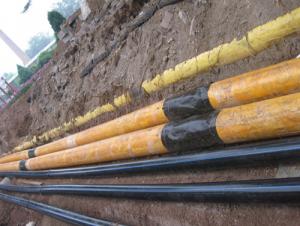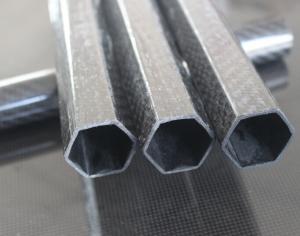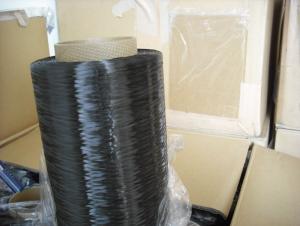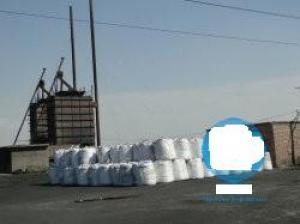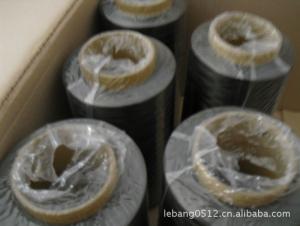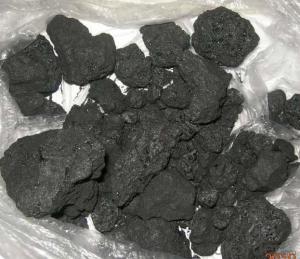Carbon Fiber/ Fiberglass Tube/Pipe
- Loading Port:
- China Main Port
- Payment Terms:
- TT or LC
- Min Order Qty:
- 2 Ton m.t.
- Supply Capability:
- 1000Ton m.t./month
OKorder Service Pledge
OKorder Financial Service
You Might Also Like
Specifications of Carbon Fiber/ Fiberglass Tube
1. Material: carbonized polyacrylonitrile fiber
2. Filament number:6k
3. Fiber type: T300
4. Tensile strength: 360kgf/mm2
General Data of Carbon Fiber/ Fiberglass Tube
Weaving Style: Unidirectional, Plain, Twill
Input Available: 3k, 6k, 12k Carbon fiber
Weight: 15 0 ~ 600g / m2
Roll length: To be specified
Storage of Carbon Fiber/ Fiberglass Tube
It is recommended that the carbon fiber fabric are stored in a cool and dry environment. Recommended temperature range of storage is between 10 ~ 30 degree and relative humidity between 50 ~ 75%.The carbon fiber fabric should remain in the packaging until just prior to use.
Packaging & Delivery of Carbon Fiber/ Fiberglass Tube
Product is manufactured in form of a roll wound on a paper tube and then packed in a plastic film and placed within a cardboard carton. Rolls can be loaded into a container directly or on pallets.
Packaging Detail: carton
Delivery Detail: within 20 days
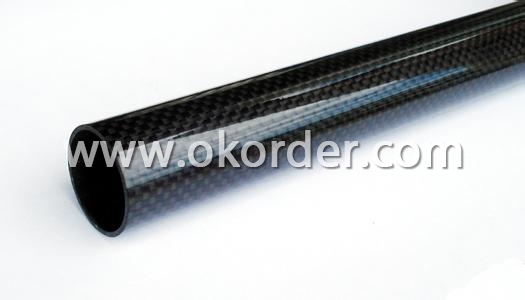
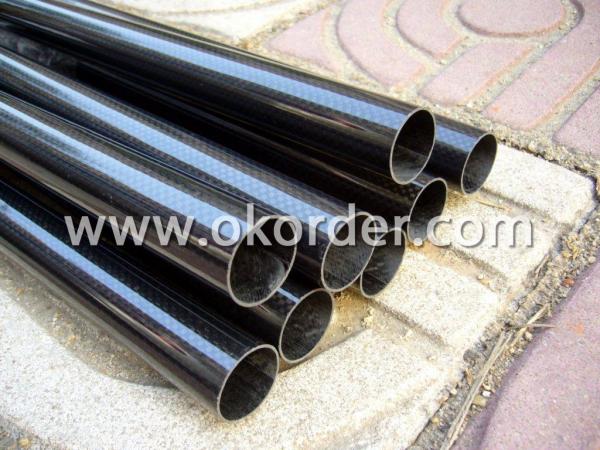
- Q: They include a cementite, two cementite, three cementite, eutectic cementite and eutectoid cementite, and compare their temperature, composition and morphology
- A: cementite in iron graphite phase, carbon content more than 4.3%, in L (Fe + Fe3C) two-phase region crystallization of Fe3C as a primary cementite formation temperature in the eutectic temperature (1148 DEG C) above, morphology in large sheets (during eutectic organization). Carbon content from 4.3% to 6.69% is the typical composition range.
- Q: How does carbon impact the prevalence of earthquakes?
- The prevalence of earthquakes is not directly influenced by carbon. Instead, earthquakes are primarily caused by the movement of tectonic plates, which are massive sections of the Earth's crust that float on the semi-fluid layer beneath. When these plates collide, slide past each other, or separate, seismic waves are released, resulting in an earthquake. On the other hand, carbon is a chemical element that exists in various forms in the Earth's atmosphere, oceans, and living organisms. Human activities, such as emitting carbon dioxide (CO2), contribute to climate change and impact the Earth's ecosystems. However, there is no direct connection between carbon emissions and the prevalence of earthquakes. Nevertheless, it is important to note that some geologists and scientists suggest that human activities, such as extracting fossil fuels, may indirectly affect seismic activity. The extraction of large quantities of oil, gas, or water from the Earth's crust can potentially alter underground pressure and stress distribution, potentially triggering induced earthquakes. These induced earthquakes are usually of low magnitude and limited to the specific extraction area. Overall, while carbon emissions and human activities may have some localized impact on seismic activity, the global prevalence of earthquakes is mainly driven by tectonic plate movements and is not directly influenced by carbon.
- Q: What are the challenges of carbon capture and storage technology?
- Carbon capture and storage (CCS) technology shows promise as a solution for reducing greenhouse gas emissions and combating climate change. Nevertheless, there are various obstacles that must be overcome in order for it to be widely adopted and effective. One of the primary hurdles associated with CCS technology is its considerable cost. The implementation of CCS necessitates significant investments in infrastructure, equipment, and operations, making it economically burdensome. Additionally, the capture process itself requires substantial amounts of energy, resulting in increased costs and potentially limiting its feasibility. Another challenge pertains to the limited capacity for storage. Identifying suitable underground sites for storing the captured carbon dioxide (CO2) is crucial, but can be difficult due to geological limitations. The task of identifying and evaluating suitable sites with adequate storage capacity is complex and necessitates meticulous planning. Furthermore, concerns exist regarding the long-term stability and integrity of the storage sites. Leakage of stored CO2 could compromise the effectiveness of CCS and pose environmental risks. Ensuring the secure and safe storage of captured carbon is essential to prevent any adverse impacts on ecosystems and public health. Transporting the captured CO2 from the capture sites to the storage facilities also presents a challenge. Establishing an efficient and extensive transportation infrastructure is necessary for the widespread implementation of CCS technology. Developing pipelines or other means of transportation capable of handling the volume of captured CO2 and ensuring its secure transport over long distances is crucial. Public acceptance and social factors also significantly impact the challenges associated with CCS technology. Local communities may have concerns and objections regarding potential risks associated with the capture, transport, and storage of CO2. Effectively addressing these concerns through transparent communication and engagement with stakeholders is vital for garnering public support and minimizing opposition. In conclusion, carbon capture and storage technology has the potential to greatly reduce greenhouse gas emissions. However, its challenges, including high costs, limited storage capacity, integrity concerns, transportation infrastructure, and public acceptance, must be addressed to ensure successful implementation and make a significant contribution to mitigating climate change.
- Q: How does carbon dioxide affect climate change?
- Climate change is significantly influenced by carbon dioxide (CO2), a greenhouse gas. CO2 is released into the atmosphere through natural processes like volcanic eruptions or human activities such as burning fossil fuels. Its presence in the atmosphere traps heat from the sun, preventing it from escaping back into space. This phenomenon is known as the greenhouse effect. Human activities, particularly the burning of fossil fuels like coal, oil, and natural gas, have led to an imbalance in the natural carbon cycle. This has caused an increase in CO2 concentration in the atmosphere, resulting in a rapid rise in global CO2 levels. Consequently, the Earth's surface is warming, and climate patterns are changing. Since the Industrial Revolution, the burning of fossil fuels has significantly elevated atmospheric CO2 levels, leading to an increase in the Earth's average temperature. This temperature rise impacts various aspects of the climate system, causing a range of effects. One of the most visible outcomes of increased CO2 levels is global warming. This warming leads to the melting of glaciers and polar ice, which in turn raises sea levels. Rising sea levels pose a threat to coastal areas and low-lying islands, causing increased flooding, coastal erosion, and potential displacement of communities. Moreover, elevated CO2 levels contribute to more frequent and intense heatwaves, droughts, and wildfires in many regions. These extreme weather events negatively affect agriculture, water availability, and human health. Carbon dioxide also disrupts ecosystems by altering the growth patterns and distribution of plant and animal species. Changes in temperature and precipitation patterns, driven by increased CO2 levels, disturb the delicate balance of life, leading to biodiversity loss and potential species extinction. To mitigate the impacts of CO2 on climate change, it is crucial to reduce greenhouse gas emissions. Transitioning to renewable energy sources, improving energy efficiency, and adopting sustainable practices are important steps in reducing CO2 emissions and limiting the extent of climate change. Additionally, efforts to restore and protect forests and other natural carbon sinks can help absorb and store CO2, thus mitigating its effects on the climate.
- Q: Consult the carbon content of austenite
- It only refers to the iron carbon two element alloy, and the other alloys are different.
- Q: What role does carbon play in photosynthesis?
- Carbon plays a crucial role in photosynthesis as it is the primary element used by plants to produce organic compounds. During photosynthesis, plants absorb carbon dioxide from the atmosphere and use it to synthesize glucose, a simple sugar that serves as a building block for more complex carbohydrates, such as starch and cellulose. This process occurs in the chloroplasts of plant cells, specifically in the stroma of the chloroplast, where the enzyme RuBisCO catalyzes the fixation of carbon dioxide into an organic molecule called PGA (phosphoglycerate). Through a series of reactions known as the Calvin cycle, PGA is converted into glucose, which can be stored for energy or used for growth and reproduction. In summary, carbon is essential for photosynthesis as it provides the raw material necessary for plants to produce their own food and sustain life.
- Q: What are the effects of carbon emissions on the stability of alpine ecosystems?
- The stability of alpine ecosystems is significantly and extensively affected by carbon emissions. Carbon emissions, mainly in the form of carbon dioxide, contribute to the greenhouse effect and subsequent climate change, thereby causing a series of impacts that directly influence the stability of alpine ecosystems. One of the most noticeable consequences is the rise in global temperatures. With increasing temperatures, glaciers and snow caps in alpine regions melt at accelerated rates. This has a profound impact on the availability of freshwater resources since alpine regions often serve as the origin of major rivers and lakes. Decreased water availability not only affects the survival of plant and animal species but also has consequences for human populations that rely on these water sources for agriculture, drinking water, and hydropower generation. Another result of carbon emissions is the alteration of precipitation patterns. Climate change disrupts the balance between rainfall and snowfall in alpine ecosystems, leading to more frequent and intense droughts or rainfall events. Such changes in precipitation patterns can result in soil erosion, landslides, and the overall instability of alpine terrain. This poses a threat to the survival of alpine flora and fauna, as well as the loss of crucial habitats and biodiversity. Furthermore, carbon emissions contribute to the acidification of alpine lakes and rivers. Increased carbon dioxide in the atmosphere dissolves in water bodies, forming carbonic acid. This acidification negatively affects aquatic organisms, such as fish and amphibians, impairing their reproductive abilities, altering their behavior, and even causing mortality. It also disrupts the delicate balance of alpine freshwater ecosystems, leading to a decrease in species diversity and ecological resilience. Lastly, carbon emissions can indirectly impact alpine ecosystems through the expansion of invasive species. Climate change creates favorable conditions for the migration of non-native plant and animal species to higher elevations. These invasive species can outcompete native flora and fauna, disrupt ecological interactions, and ultimately lead to the displacement or extinction of native species. This disrupts the natural balance of alpine ecosystems and compromises their stability. In conclusion, the stability of alpine ecosystems is profoundly affected by carbon emissions. These emissions contribute to the melting of glaciers, alteration of precipitation patterns, acidification of water bodies, and the spread of invasive species. These impacts disrupt the balance of alpine ecosystems, leading to the loss of biodiversity, degradation of habitats, and reduced availability of freshwater resources. Urgent action to mitigate carbon emissions is crucial to preserve the stability and functioning of these fragile ecosystems.
- Q: How does carbon affect the water cycle?
- The water cycle is affected by carbon in various ways. To begin with, carbon plays a vital role in the atmosphere as carbon dioxide (CO2). Human activities such as burning fossil fuels, deforestation, and industrial processes have caused an increase in the concentration of CO2 in the atmosphere. This rise in carbon dioxide levels leads to global warming and climate change, which then impacts the water cycle. One significant consequence of increased carbon dioxide is the alteration of precipitation patterns. Carbon emissions cause warmer temperatures, resulting in more evaporation from bodies of water. This leads to an increase in water vapor in the atmosphere. The additional moisture can lead to intensified rainfall in certain areas, causing floods. On the other hand, some regions may experience droughts as evaporation rates surpass precipitation rates. These changes disrupt the balance of the water cycle and affect the availability of water resources for both humans and natural systems. Moreover, carbon dioxide dissolved in water forms carbonic acid, which lowers the pH level of oceans and bodies of water. This process, known as ocean acidification, has a negative impact on marine life, including shellfish, corals, and other organisms that rely on calcium carbonate to build their shells or skeletons. Consequently, the disruption of these species can have a domino effect through the food chain, ultimately affecting the entire ecosystem. Additionally, carbon influences the melting of polar ice caps and glaciers. Increased carbon emissions have caused a rise in global temperatures, which accelerates the melting process. As the ice melts, it releases freshwater into the oceans, leading to a rise in sea levels. This can have devastating consequences for coastal communities, increasing the risks of flooding and erosion. In conclusion, carbon emissions, mainly in the form of carbon dioxide, have a significant impact on the water cycle. They disrupt precipitation patterns, contribute to ocean acidification, and accelerate ice melting. All of these effects disturb the delicate balance of the water cycle and have far-reaching consequences for ecosystems and communities worldwide.
- Q: Organic matter is converted from organic carbon. Why is humus represented by carbon instead of converted?
- Therefore, only there is a certain relationship between soil carbon content and soil organic matter, high carbon content of soil humus certain, but it does not explain the soil organic matter, because organic matter contains not only the humus, also contains many other organic substances are not decomposed.
- Q: What is the boiling point of carbon?
- The boiling point of carbon is approximately 4,827 degrees Celsius (8,740 degrees Fahrenheit).
1. Manufacturer Overview
| Location | Shanghai, China |
| Year Established | 1995 |
| Annual Output Value | Above US$ 20,000 |
| Main Markets | Mid East; Eastern Europe; North America |
| Company Certifications | ISO 9002:2000 |
2. Manufacturer Certificates
| a) Certification Name | |
| Range | |
| Reference | |
| Validity Period |
3. Manufacturer Capability
| a) Trade Capacity | |
| Nearest Port | Shanghai |
| Export Percentage | 20% |
| No.of Employees in Trade Department | 100 People |
| Language Spoken: | Chinese |
| b) Factory Information | |
| Factory Size: | Above 100,000 square meters |
| No. of Production Lines | Above 5 |
| Contract Manufacturing | OEM Service Offered; Design Service Offered |
| Product Price Range | Average |
Send your message to us
Carbon Fiber/ Fiberglass Tube/Pipe
- Loading Port:
- China Main Port
- Payment Terms:
- TT or LC
- Min Order Qty:
- 2 Ton m.t.
- Supply Capability:
- 1000Ton m.t./month
OKorder Service Pledge
OKorder Financial Service
Similar products
Hot products
Hot Searches
Related keywords



